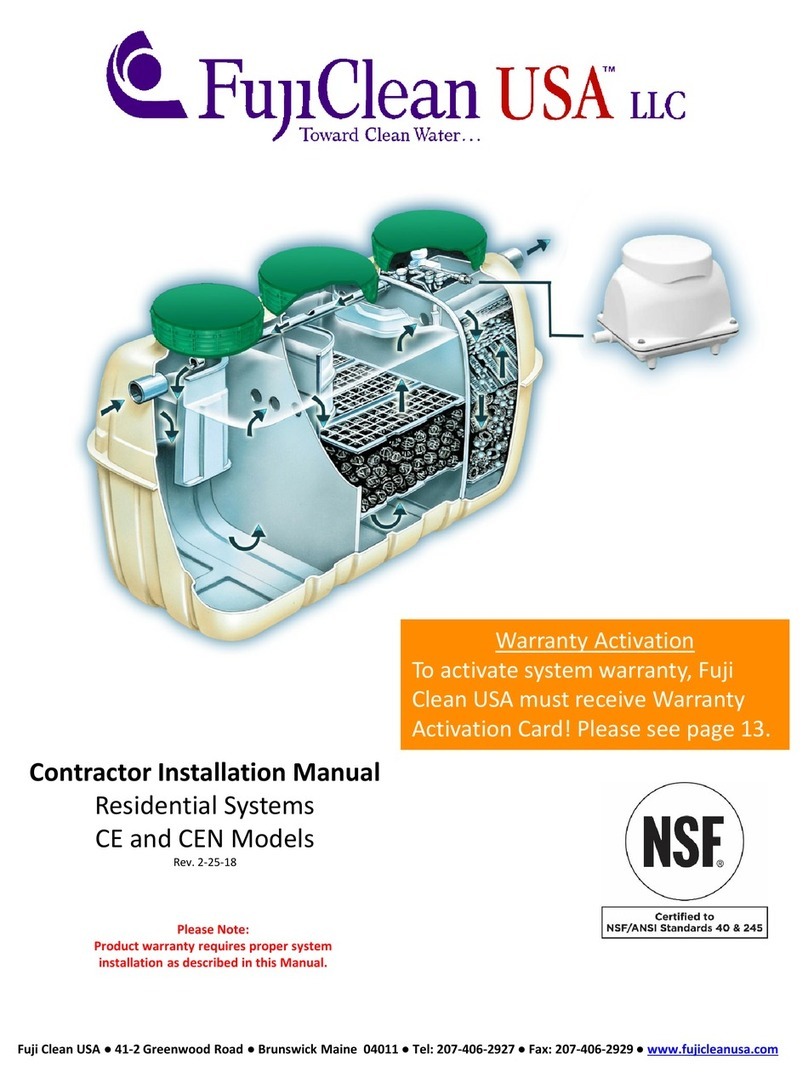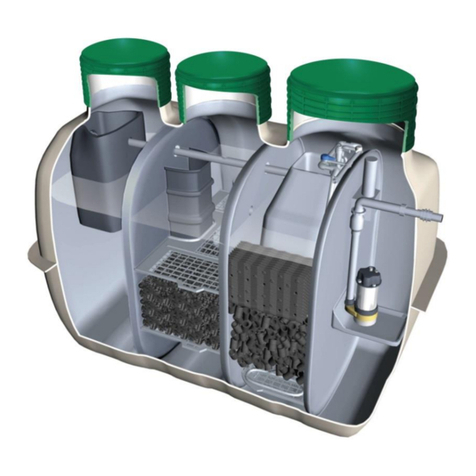4
3 MAINTENANCE PROGRAM
Scheduled Maintenance
The effective operation of the system is dependent on regular maintenance. The system must be
serviced EVERY 3 MONTHS by a qualified service professional. Regular maintenance involves
periodic removal of excessive sludge and scum build-up from the plant. The frequency of removal
depends on the system’s loading.
Consumable parts for the blower such as air filter and diaphragms need to be replaced as required.
Pre-operational Inspection
Inspect and ensure the following requirements:
The plant is accessible and nothing inhibits maintenance.
Surface water is draining away from the plant.
The plant is filled with water, is level, and each component functions properly.
There is no damage to the tank, piping, or other components.
There are no air leaks in the air piping and the air piping is connected correctly.
Regular Maintenance Procedures
1. Check for the following signs of trouble:
Any obvious signs of physical damage to the plant.
Surface ponding or muddy soil around the plant or disposal area.
Unusual smells around the plant.
2. Open the blower box and inspect all components and vents to ensure they are clean and dry.
3. Make sure the blower operates properly and clean the air filter or replace it, if necessary. Turn off
the blower for a few moments to check that the alarm is triggered.
4. Open all access covers and secure the area around the access openings.
5. Collect a sample of treated effluent from the pump chamber and check the condition.
6. Check if the high water float switch and the pump float switch are operating freely. Lift up the
pump float switch to check that the pump operates properly and lift up the high water float switch
to check that the alarm is triggered.
7. Make sure that the inflow pipe is not blocked and check scum level of each chamber. If any scum
appears in the storage chamber or pump chamber, scoop and transfer it into the sedimentation
chamber.
8. Measure the sludge accumulation depth of each chamber. Any sludge built up in the pump
chamber needs to be transferred to the sedimentation chamber.
9. Agitate the anaerobic media gently to prevent blockage as described in “(1) Degassing / Agitating
Anaerobic Media”on page 8.
10. Measure the recirculation rate as described in “(3) Measuring Recirculation Rate”on page 5.
11. Check if the bubbles are evenly distributed throughout the aeration chamber.
12. Perform a backwash operation as described in “Backwash and Sludge Transfer” on page 6.
13. Check if the effluent airlift pump is operating properly and flush the airlift pump as described in
“Servicing the Effluent Air-lift Pump”on page 7.
14. Adjust the recirculation rate as described in “(2) Adjusting Recirculation Rate” on page 5.






























